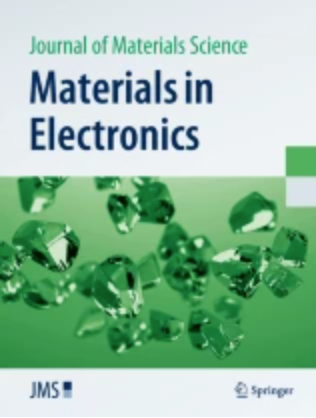Synthesis and tuning the morphological and optical features of PS/SiO2–Sb2O3 promising hybrid nanomaterials for radiation shielding and futuristic optoelectronics applications
Abstract
The current work objects to develop of novel nanostructures fabricated from polystyrene (PS) doped with silicon dioxide (SiO2) and antimony dioxide (Sb2O3) nanoparticles as promising hybrid nanomaterials that may be employed in advanced radiation shielding and optical applications. The morphological and optical properties of PS/SiO2–Sb2O3 NCs were investigated. The results showed that the SiO2–Sb2O3 nanoparticles were dispersed in the polymeric matrix with uniformly distribution throughout the host polymer. The optical findings showed the absorption (A) of polystyrene was increased of 86% at wavelength (λ) = 300 nm, while the transmittance (T) decreased of 38% as the SiO2–Sb2O3 ratio increased to 6.9 wt%. The energy gap (Eg) of pure PS decreased from 3.6 eV to 1.8 eV when the SiO2/Sb2O3 nanoparticles ratio reached of 6.9 wt%. The optical constants (absorption coefficient, extinction coefficient, refractive index, optical conductivity, and real and imaginary dielectric constants of the PS/SiO2–Sb2O3 nanostructures were improved with adding of SiO2–Sb2O3 nanoparticles. The radiation shielding results showed that the attenuation coefficients were increased with increasing of SiO2–Sb2O3 NPs concentration. Finally, the obtained results indicated that the PS/SiO2–Sb2O3 films are promising nanostructures radiation shielding and futuristic optoelectronics applications.

 求助内容:
求助内容: 应助结果提醒方式:
应助结果提醒方式:


